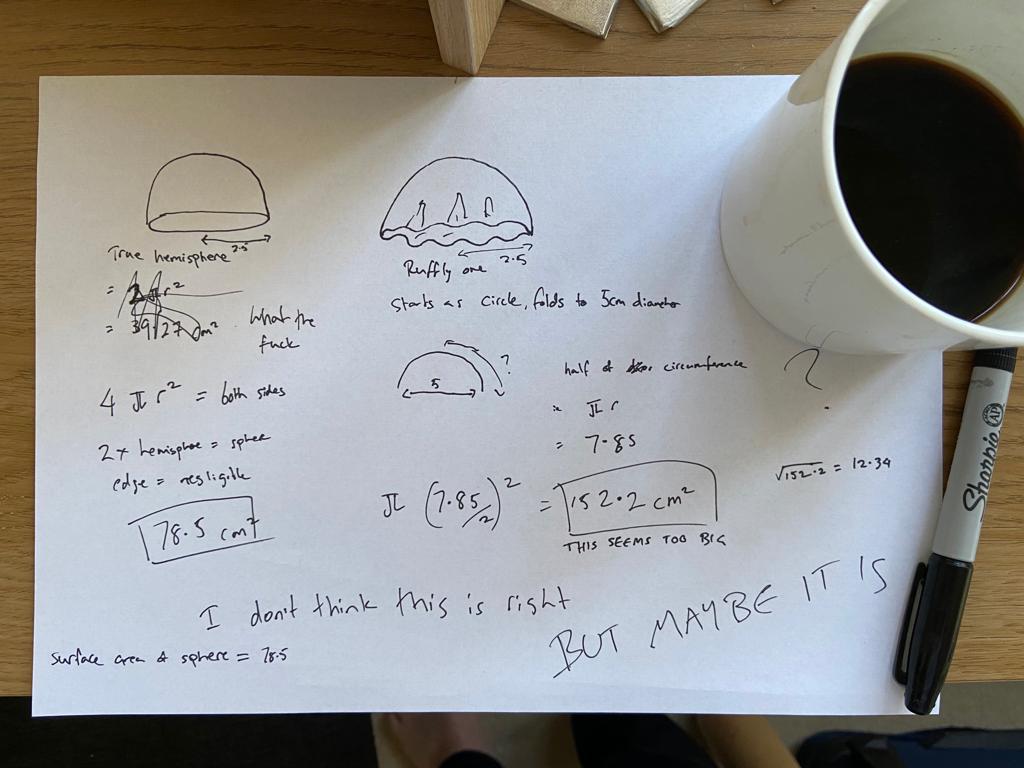Forget Thanksgiving. The most gluttonous day of the year is Super Bowl Sunday, where bowl after bowl and paper plate after paper plate is filled with finger-food bacchanalia that would make even the mad genius responsible for the TGI Friday’s appetizer selection blush (and certainly the ancient Romans). And so, all week leading up to game day, we’ll be offering up our own menu of scientific investigations, origin stories and majestic feats of snacking that not even the biggest sporting event of the year can top. Read all of the stories here.
Tostitos Scoops are delicious. That’s fairly close to being an objective statement of fact. Like, if someone says, “They’re fine I guess,” that’s okay. But if someone says, “Tostitos Scoops? Disgusting!” they’re a liar. Don’t trust them.
If Tostitos Scoops have a USP, it’s their handy bowl shape, which makes them incredible at picking up near-industrial amounts of salsa. It’s ingenious — after trying them, using a flat surface to lift a free-flowing substance seems like the behavior of a subnormal dickhead.
But hold on. They aren’t just straight-up bowls. They have a kind of ripple to them, a ruffly ridge, like a less-tight version of a concertinaed coffee filter or cupcake case. Why? Wouldn’t a straightforward hemisphere — like half a tennis ball, or an actual bowl — make more sense?
What are those bits for? The options pretty much come down to:
- Pure aesthetics
- Some sort of structural reason
- Some sort of deliciousness reason
- Some sort of ease-of-making reason
Which is it? Of course, when it comes to the decisions made in the production of Tostitos Scoops, nobody knows more than Frito-Lay themselves. The delicious multinational PepsiCo subsidiary make Fritos, Cheetos, Doritos and Tostitos, making every shareholder meeting presumably sound slightly like a very underwhelming freestyle.
However, all official lines of inquiry ended in disappointment. After multiple attempts through way too many channels, Amanda at Consumer Relations politely refused to take the conversation any further, saying “we do not have any information on the scoops.” She wouldn’t even confirm whether all those names were plurals or not — can you have one Tostito, or is it just, like, “one Tostitos chip”? Amanda’s not saying shit. (Old El Paso, who make a slightly crappier version, were similarly unforthcoming.)
“I’ve eaten a lot of Tostitos Scoops,” says exotic chip enthusiast Barry Enderwick, who reviews chips on YouTube under the name In The Chips. “I am of the opinion that the shape of them not only helps them hold dip, but also helps prevent them from breaking when scooping up dip or salsa. Plus, the fact they look like mini versions of the the edible bowls used for taco salads certainly doesn’t hurt.”
Enderwick could be onto something here. An edible taco salad bowl is made from a flat tortilla, squished into the shape of a bowl before being baked or fried to go hard and keep its shape. Tostitos Scoops are essentially micro versions — the crappy Old El Paso versions are even called Tortilla Bowls.
They all have those ruffly bits, and it all comes down to physics. A perfect hemisphere is impossible with the tortilla chip production process, in which corn is cooked, flattened into a dough called masa, rolled into large sheets and cut to size before being baked and deep-fried. Unlike corn chips, which are molded, tortilla chips start out flat, and you can’t bend a flat sheet into a sphere or hemisphere without an element of overlap. Think about wrapping a basketball in wrapping paper — in order to get it tight, you’d need to crumple it in a way that wouldn’t be necessary for something cube-shaped.
This is examined beautifully in a 2007 paper published in Computational Geometry: Theory and Applications, “Wrapping Spheres with Flat Paper” by Demaine et al. They note that you can do a decent enough job with foil, but “such wrappings differ from standard mathematical origami because they require infinitely many infinitesimally small folds (“crumpling”) in order to transform the flat sheet into a surface of nonzero curvature.”
Foil is easier than paper, and paper is easier than a tortilla — if you crumple a tortilla into “infinitesimally small folds,” what you’re doing is “fucking up a tortilla.” You can’t do big tight folds, or lots of tiny ones — it’s not what a tortilla is built for. You’ll just tear it like a big no-dip dumbass. A few larger ripples or ruffles, though, and you’ve pretty much got a bowl.
A true hemisphere would be possible using the corn chip method, or the Pringles manufacturing process. Pringles use a hyperbolic paraboloid shape, which isn’t flattenable — it seems like it would be straightforward enough to alter it to a hemisphere or circular paraboloid if desired.
However, a totally regular bowl shape would bring new issues — issues Pringles are all too familiar with. Perfectly regular bowl-shaped chips would have to be stacked to stand any chance of making it to the consumer in one piece. If they were loose in a bag, while some might slide neatly into one another, two facing each other would almost guarantee breakage, as well as requiring significantly more space. You’d need to go down the Pringles tube route, which is both expensive and environmentally unfriendly. Rippled, less regular chips can overlap more easily in a bag without breaking, and unlike a bowl, a crack isn’t necessarily going to continue down the whole thing — little bits can break off and it all looks fine.
And if that wasn’t enough, the rippled method results in more surface area. An admittedly shitty attempt at math resulted in a 2.5-centimeter-radius chip having 78.5 square centimeters of total surface area (i.e., inside and outside) in pure hemisphere form, and 152.2 square centimeters in ruffled-ass, big-circle-wedged-into-a-bowl-shape form. That’s almost twice as much surface area, which is a lot more flavor, a lot more crispiness, a lot more contact with salsa, a lot more of basically everything that makes a chip good. (If the math isn’t exactly right, the idea is, so please don’t write in.)

So, why the ruffles in Tostitos Scoops? Every possible reason. They’re better in terms of structure, flavor, user-friendliness and value than a more conventional bowl shape, and there’s surely a strong argument to be made for their vaguely seashell-like irregular contours being more pleasing to the eye than a homogenous alternative. Those folds are where the magic lies.
Savor them as you enjoy a Tostito. Is that what a single one is called? We may never know. God damn you, Amanda. God damn you to delicious hell.

